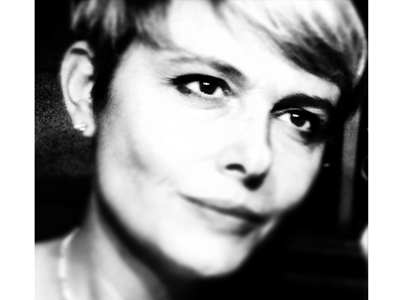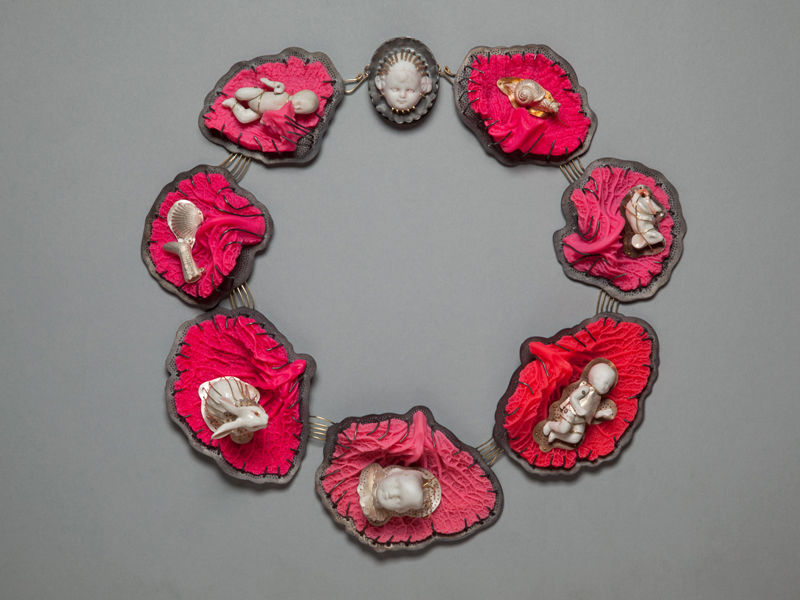
Barbara Paganin, Dall’orto alla Soffitta (From the Vegetable Garden to the Attic)
October 16–November 22, 2015
Oratorio di San Rocco, Padua, Italy
Barbara Paganin is a reserved woman, with delicate features and an intense gaze. Her movements are measured; she expresses herself calmly and confidently, talking about her work as if it were a natural extension of her being.
In fact, she makes no distinction between herself and her work: this was clear to me as soon as I met her face to face at the press conference preceding the exhibition opening, and clearer still a few days later, when we both sat down to chat over coffee.

There are about 130 works on display at the Oratorio di San Rocco.[1] One hundred and thirty fragments of Paganin’s creative practice that are related to each other in a constant game of developmental references. The pieces are shown in chronological order and also grouped by collections: they range from her early work in the 80s—which according to critics underlines a close connection to the Gold School of Padua— to the most recent Memoria Aperta series, whose formal and aesthetic values are exemplary of her mature style.
Aligning Paganin’s artistic background too closely with the “School of Gold”[2] does not reflect the range of her practice. The composition of her early work, as has been pointed out, undoubtedly shows a taste for investigating the natural world. However, the analysis of biological structures and the meticulous research that the artist applies to each project is put at the service of altogether geometrical compositions.
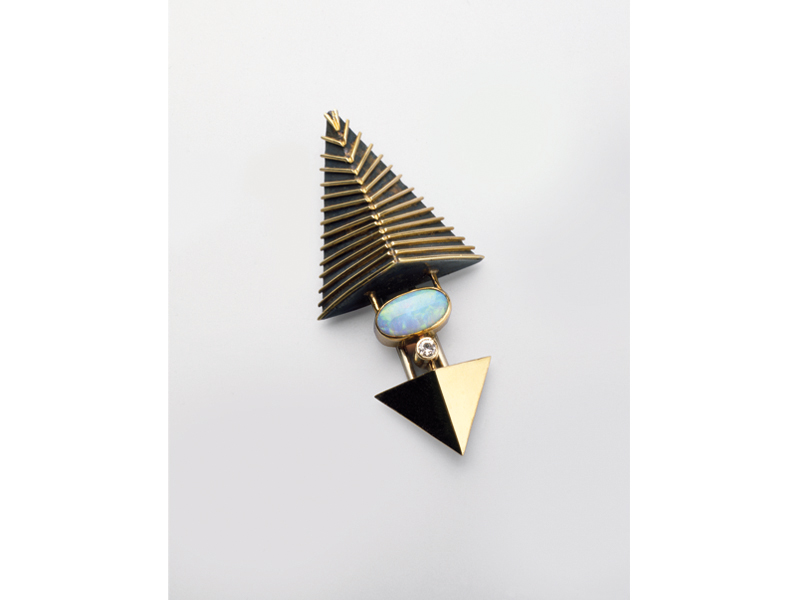
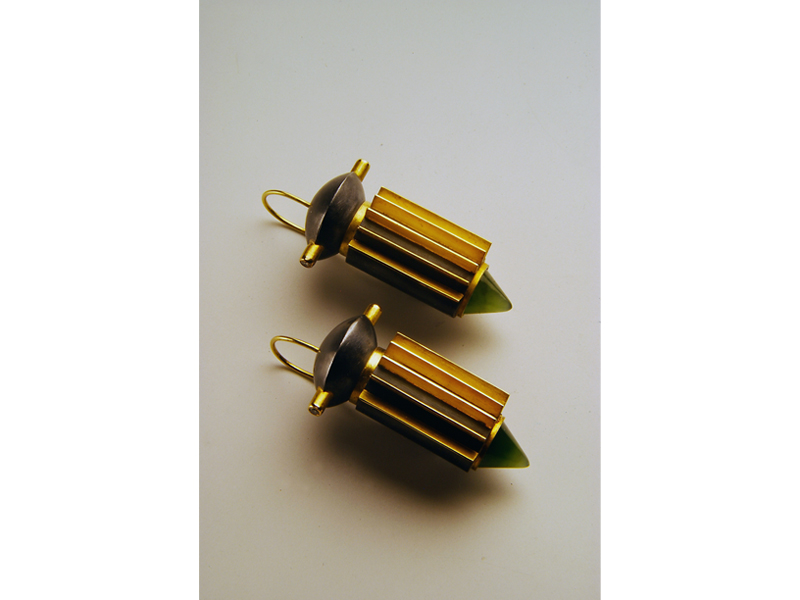
For example, the unidentified objects that populate the surface of the Reperti cuff began their life as individual insect studies: Art Deco creatures revisited in a more solid key. Paganin focuses on a characteristic detail that identifies each creature, which she then reinterprets in a singular way. She is neither minimalist nor rhetoric in the act of composing: She simply channels her personal “memory” of things into her works, with no excessive transformations, freeing their essence. This is a visionary process that becomes clearer and sharper over time, by juxtaposing symbolic elements, by recalling tactile sensations and plucking memories from a stream of consciousness quite unconcerned with linear time. In Reperti, each individual element constitutes a finished work, but they were put together—arranged—in a perfect balance. They emerge, indeed become fossils, from the precious metal, exposing only part of themselves, asserting their right to be remembered and the closure of this inspirational phase.
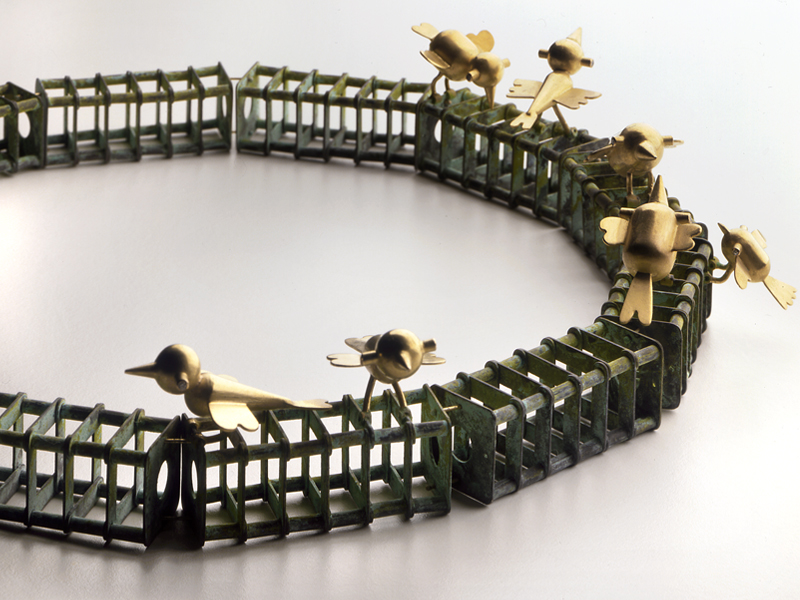
Ornitologioia—which points to the rigorous geometric necklaces made by the masters Pavan, Babetto, Maurizio, Zorzi, and Visintin—follows a similar compositional strategy by introducing an element of “disorder” into an orderly structure: in this case, gold birds cheerfully laid on a patinated silver lattice. While paying homage to the strict formal rule of the Gold School of Padua, this escamotage places Paganin’s works well outside its boundaries.
By the end of the 90s, in fact, Paganin will forgo references to the elite Venetian contemporary jewelry club, drift away from a recognizable Italian formal vocabulary, and steer into a more northern European stream: bolder in expressiveness and research.

The collections related to the sea and its creatures were conceived under these new premises. The jewels reflected a need to express herself in a different and more complex stylistic way, using the native land as a point of reference. Shapes became unstructured, almost subverting the absolute precision which governs the natural order. Now objects harmonized with the idea of values the artist re-created in her imaginative universe. So thousands of micro beads (Venetian glass beads or conterie[3]) arise from tiny holes.
Anemones and corals emerge in an explosion of colors and diamonds, cast in niello,[4] peep as witnesses of other memories acquired by the artist—in this case—during diving excursions.

Paganin perceives the world as a vast field of sensory research in which the simplest life-forms function as test samples for investigating the principles of the universe and society. Let us look, for example, at the collection devoted to Seeds. The artist is interested not only in how the fruits look—their varied sizes and colors—but also in the mysteries they hide. As in a shape sorter, surfaces break down, the observation level changes and structures are complicated, revealing meanings sometimes opposed to their signifier. As Paganin explained to me, nature becomes a distinct metaphoric model suitable to show men’s weaknesses or to enhance their heterogeneous souls.
If the concept of “seeds,” as it relates to Goethe’s[5] poetics, so dear to Paganin, represents the original point of substance aggregation, the leaf is an expression of all its generating capacity or, to put it better, the complete image of what the plant will be.
The leaf in this case is that of a cabbage.
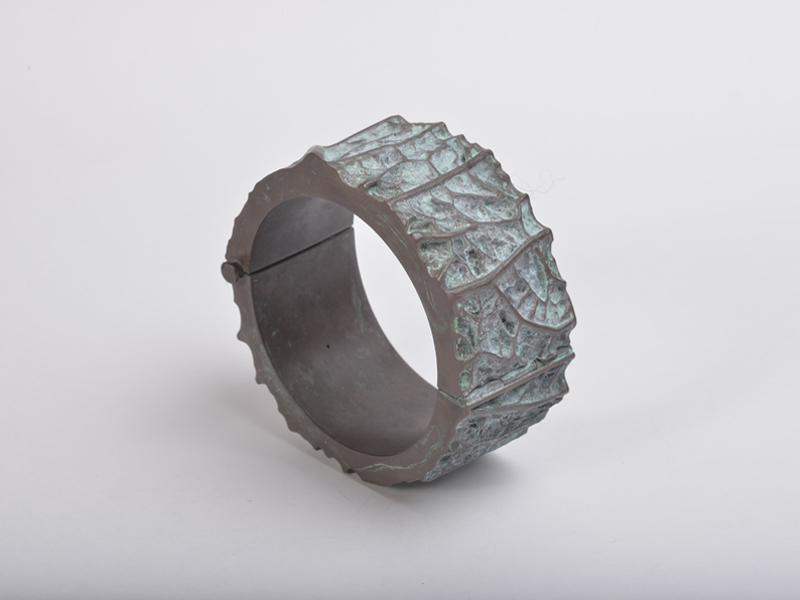
Cabbage, from 2006, became a new challenge for the artist. She told me during our meeting that she could not wait to get home to handle the vegetable she chose for her new challenge—to admire its many, crispy folds, to cut it and fathom its intricate paths, to imagine how the countless veins and arteries refer to the spark of life itself. Life that she, in an ongoing pursuit, represents again and again, thanks to the lost wax technique, in rings, brooches, bracelets, and necklaces. In silver, patinas, and oxides, but also, for the first time, in resin and glass.
Paganin’s discovery of the magical world of glass modeling took place at the Abate Zanetti School of Glass in 2007, after she won the 7th Trieste Contemporanea International Competition. Fascinated by the nuances and technical difficulties in handling the incredible material, she began to include in her work delicate masterpieces of glass art. The period coincides with her move from Venice to the mainland. This painful detachment brought a new challenge, and a new area of investigation: testing her roots through all that the environment can provide. The artifacts found by chance in her garden urged her to keep trace of a collective memory and emphasize her strong attachment to her native land.
The formal language that she started developing after the move has been enriched over the years, and continues to define her creative outlook today. It reflects a conception of time that is not linear, nor explicitly articulated. Her jewelry assemblages function like a code woven out of precious metal, gems, glass, objets trouvé, polymethyl methacrylates, ceramics, and resins, using refined goldsmithing techniques alongside new processing methods (note, for example, the use of titanium in the brooch Tubipora).
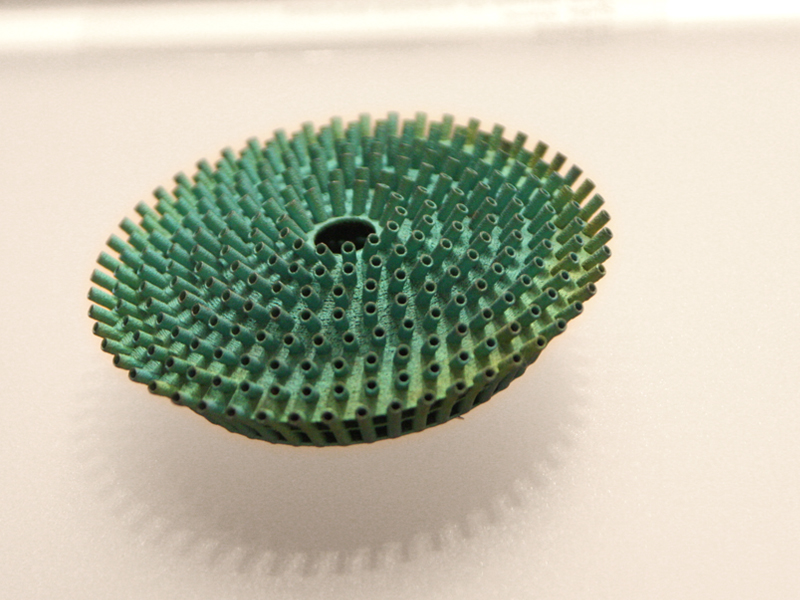
If the interpretative key is always left to the observer, Paganin’s works often provide evidence of the close connection between her art and her life experience. The micro-holes that often dot her creations, for example, are the result of serial gestures taught to her by nuns during her childhood—punching small holes into drawings to cut them without the aid of scissors. A Proustian poetic, anchored in old souvenirs, personal or collective, is the central theme of this anthology, and it finds a temporary conclusion in the brooches Memoria Aperta and the necklaces Catarsi.
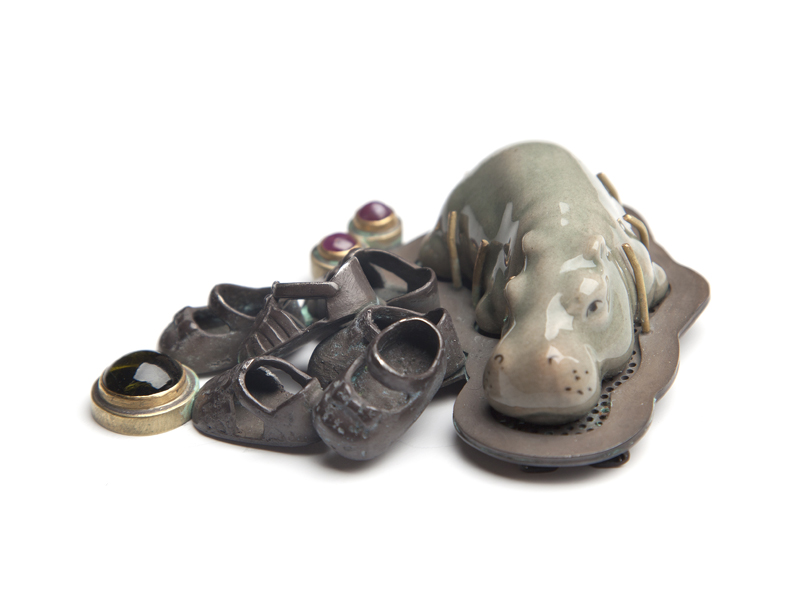
Through a continuous exchange between objective and subjective temporal connections, the artist effectively tests the value of the memories that bind everything and everyone. In this collection, ceramic animals, porcelain dolls, sculpted ivory shapes, woods, glass, miniatures of old photos—unearthed, inherited, and collected relics—are mixed in with incredible reproductions in lost wax of shoes, dresses, tiny tools of daily use, mini-bestiary, and gems. Paganin weaves her thick net of information on a sort of genetic algorithm in which everyone can find their reflection. Each brooch, every necklace starts a story. It’s up to us to choose the plots.
The Oratorio di San Rocco is an amazing exhibiting location, so amazing that the beauty of the frescoes above often overwhelms the work on display below, diverting the attention of the viewer.
Well, in Dall’orto alla Soffitta, this does not happen. The high number of pieces on show, their remarkable power of communication, and their astute arrangement in the showcases worked magic and charmed the large audience at the vernissage, who could either move freely or follow the way through the cabinets, arranged in a chronological setting, from the left side around the room to the right side. Since Paganin welcomed visitors two days a week, and guided them through the show, I had the opportunity to meet her many times. My repeated visits made me aware of the less obvious ingredient of this enchantment. Alongside the jewels lent by prestigious international museums,[6] the jewels owned by private collectors stood out: They delivered a peculiar emotional energy because they live, as should be the case, their life as brooches, rings, necklaces. And soon, they will be back with their owners.
Dall’orto alla Soffita is the first retrospective dedicated to Paganin’s work in Italy, and we should be thankful to the city of Padua for paying homage to a great maker, and aligning itself with recognition she has already received abroad.
The question is, why did we have to wait so many years?
One possible interpretation is that her work is too innovative and especially too “divergent” from that of the Gold School of Padua to have been widely promoted or simply given its proper due in Italy. Being so stylistically detached sent her on a different, international career course.
The long-awaited exhibition, however, gives evidence of a practice that connects tradition and novelty, a bridge between two artistic generations and two schools of thought, the Italian and the northern European.
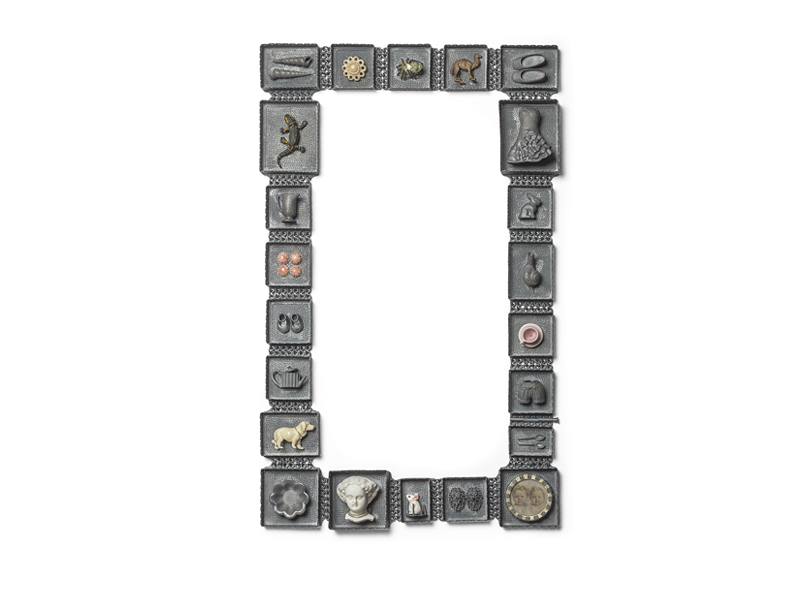
ITALIAN VERSION
La bellezza del cavolo. Dalla natura all’uomo nell’estetica di Barbara Paganin.
Silvia Valenti

Barbara Paganin. “Dall’orto alla soffitta”.
16 October − 22 November 2015
Oratorio di San Rocco. Padova, Italia
Barbara Paganin è una donna schiva, dai lineamenti delicati e dallo sguardo intenso. Le sue movenze sono misurate, si esprime con tono pacato e sicuro e parla del suo lavoro come se fosse un naturale prolungamento dell’essere.
Non sussiste dicotomia tra lei e le sue opere.
Questa è stata, senza dubbio, la prima certezza che ho avuto incontrandola di persona alla conferenza stampa dell’evento. Certezza confermata all’inaugurazione della mostra e poi, qualche giorno più tardi, conversando liberamente davanti a un caffè.
Sono circa centotrenta i pezzi esposti all’Oratorio di San Rocco[7]. Centotrenta frammenti di narrazioni che si ricollegano le une alle altre in un costante gioco di riferimenti evolutivi. I gioielli si mostrano infatti al fruitore in ordine cronologico e anche raggruppati per collezioni: da quelli degli anni Ottanta, in cui la critica legge una stretta connessione alla Scuola Orafa Padovana[8], sino agli ultimi della “Memoria Aperta” ricchi di valenze formali ed estetiche dall’ampio segno identificativo.
Far dipendere, però, a tutti i costi il background artistico di Barbara Paganin dagli stilemi della Scuola dell’Oro non corrisponde appieno alla realtà dei fatti. Indubbia è la compostezza dei suoi esordi, come indubbio, e già marcato, risalta il gusto per l’indagine del mondo naturale.
Se vogliamo, dunque, citare le geometrie, dobbiamo rifarci all’analisi delle strutture biologiche e al minuzioso studio che l’artista dedica a ogni progetto.
Gli insetti che scaturiscono dal suo immaginario rimandano all’Art Déco rivisitata in una chiave più solida. I dettagli di ogni essere assurgono a centri focali dell’attenzione sottolineando un’ottica creativa davvero speciale. Barbara Paganin non è minimalista né retorica nell’atto del comporre, trasferisce semplicemente la “memoria” intima senza eccessive trasfigurazioni, affrancandone l’essenza. Un processo visionario, questo, che si enuclea per immagini via via più nitide, per giustapposizioni di entità simboliche, per richiami di sensazioni tattili e decodifiche scaturenti in un flusso di coscienza svincolato dal tempo lineare. Nel bracciale “Reperti” ogni singolo elemento rappresenta un’unità compiuta ma, una volta assemblato, si mostra in un insieme di perfetto equilibrio. Divenuti invero dei fossili, gli insetti emergono dal metallo prezioso solo in alcune parti affermando il loro diritto al ricordo e la chiusura del ciclo che li ha generati.
“Ornitologioia” – che in un approccio superficiale sembra ispirarsi alle collane costruite secondo rigorose geometrie dai Maestri Pavan, Babetto, Maurizio, Zorzi e Visentin – segue la stessa rotta introducendo un fattore di disturbo per nulla d’intralcio allo sguardo: gli uccellini d’oro briosamente posati sull’argento patinato della struttura. A chi è ben nota la rigida regola formale della scuola padovana, questo espediente fa capire quanto il lavoro della Paganin ne sia distante.
Verso la fine degli anni Novanta, infatti, la Paganin si allontana dal circolo elitario del gioiello contemporaneo veneto e da un certo linguaggio italiano, per accostarsi elettivamente a un filone nordeuropeo più audace nell’espressività e nella ricerca.
Nascono allora le collezioni legate al mare e alle sue creature che descrivono un passaggio obbligato per cui la relazione con il territorio natale e la necessità di esprimersi con una cifra stilistica diversa e più complessa si rafforzano sviluppandosi in modo originale. Qui le forme sembrano abbandonarsi al caso, sovvertire la precisione fenomenica della natura e armonizzarsi con l’idea valoriale che l’artista ricrea nella sua immaginario iconico. Così migliaia di microperle (conterie veneziane[9]) nascono da minuscoli forellini.
Anemoni e coralli affiorano in esplosioni di colori e i diamanti, incastonati nel niello[10], fanno capolino come testimoni di un’altra memoria acquisita, in questo caso, durante delle immersioni in mari tropicali.
Barbara Paganin percepisce il mondo come un immenso campo di ricerca sensoriale in cui ogni più semplice annuncio di vita comunica una scoperta e un’ulteriore inchiesta sui canoni dell’universo e della società. In questa sequenza concettuale si può porre la collezione dei “Semi”.
Le frutta la attraggono per la difformità dei volumi, dei colori e per i misteri che nascondono. In un gioco di incastri le superfici si scompongono, i piani di osservazione cambiano e le architetture si complicano palesando significati talvolta opposti ai loro significanti. Come Barbara mi ha spiegato, la natura è un chiaro modello metaforico atto a testimoniare le debolezze dell’uomo oppure a esaltarne l’anima eterogenea.
Se il concetto di seme della poetica goethiana[11] tanto cara alla Paganin rappresenta il punto originario di aggregazione della materia, la foglia ne è l’espressione di tutta la capacità generativa, ossia l’immagine completa di ciò che la pianta sarà.
La foglia in questo caso è quella del cavolo.
Il cavolo, dal 2006, diviene una nuova sfida per l’artista. Lei stessa mi ha confessato durante il nostro incontro che non vedeva l’ora di maneggiare quell’enigmatico ortaggio − scelto come nuova sfida da affrontare −, per ammirare le sue mille pieghe croccanti, per tagliarlo e sondarne gli intricati percorsi, per capire quanto quelle innumerevoli vene e arterie rimandino alla scintilla della vita stessa. Vita che lei, in un ripetersi spontaneo, ripropone grazie alla fusione a cera persa in anelli, spille, bracciali e collane. Mentre tra argento, patine e ossidi appaiono anche le resine e i vetri.
L’esperienza presso la Scuola del Vetro Abate Zanetti, dopo l’attribuzione del Primo Premio al VII Concorso Internazionale “Trieste Contemporanea”, le fa scoprire l’arte del vetro. Affascinata dalle gradazioni di questo incredibile materiale e dalle difficoltà tecniche dei processi, inizia a plasmare delicati capolavori inserendoli nei suoi manufatti. Il periodo coincide con il trasferimento da Venezia alla terraferma. Il distacco la porta a sondare le sue radici attraverso tutto ciò che l’ambiente le dona. I reperti trovati per caso nel proprio orto la spingono a tenere traccia di una memoria collettiva e sottolineano con forza il suo attaccamento al territorio.
Il vasto linguaggio che si è delineato e arricchito nel corso degli anni ci restituisce nitidamente l’ideologia sottesa alla poetica dell’artista. La concezione del tempo non è razionale, bensì avvertita a livello di coscienza. I gioielli enunciano un codice intessuto di metallo prezioso, di gemme, vetri, objet trouvé, polimetilmetacrilati, ceramiche, resine, sostanze molteplici elaborate con raffinatissime tecniche orafe tra cui la lavorazione del titanio che sperimenta nella spilla “Tubipora”.
La chiave di lettura è sempre lasciata all’osservatore.
Sapere però che i microfori che costellano spesso le basi delle sue creazioni sono frutto di gesti seriali acquisiti dalle suore durante l’infanzia – punteggiare i disegni per tagliarli senza l’ausilio delle forbici – favorisce un corretto giudizio critico su Barbara Paganin poiché ci dimostra la stretta simbiosi tra vissuto e arte.
Una poetica di raffinata accezione proustiana è dunque il filo conduttore di questa mostra antologica che si chiude con la serie di spille “Memoria Aperta” e con le collane “Catarsi”.
Nel continuo e alterno scambio tra connessioni temporali oggettive e soggettive, l’artista testimonia con vigore la valenza universale del ricordo. In tale sezione gli animaletti di ceramica, le bamboline di porcellana, gli avori, i legni, i vetri, le miniature di foto d’epoca – reliquie scovate, ereditate e collezionate – si fondono con ineccepibili riproduzioni a cera persa di scarpine, abitini, minuscoli arnesi d’uso quotidiano, minibestiari e gemme incastonate. La Paganin tesse la sua fitta rete di informazioni su una sorta di algoritmo genetico in cui ci si può rispecchiare. Ogni spilla, ogni collana avvia una storia. Sta a noi sceglierne le trame.
Trame che la cornice espositiva dell’Oratorio di San Rocco con la bellezza stupefacente dei suoi affreschi non riesce a sovrastare. Tutto in “Dall’orto alla soffitta” brilla di luce propria per l’altissimo numero di pezzi in mostra, la loro notevole efficacia comunicativa, la disposizione intelligente decisa su basi cromatiche, formali e cronologiche.
Si è concretizzata, in sostanza, una magia che ha affascinato il numeroso pubblico presente alla vernice, libero sia di muoversi tra le teche sia di seguirle in ordine da sinistra verso destra.
Visto, poi, che Barbara due volte alla settimana accoglieva i visitatori per illustrare i suoi percorsi, ho potuto chiacchierare ancora con lei, e intuire perciò l’ingrediente meno palese di tale suggestione. Accanto ai gioielli esposti nei più prestigiosi musei del mondo[12], espressione preziosa del suo successo, spiccano per una particolare allure emotiva quelli di proprietà di collezionisti privati che vivono, come è giusto, la loro vita di spille, anelli, collane.
Bene, “Dall’orto alla soffitta” è la prima antologica che l’Italia dedica a Barbara Paganin. il Comune di Padova se n’è fatto tramite ribadendo gli originali contributi di molti anni di impegno già ampiamente riconosciuti all’estero.
Viene di conseguenza spontaneo chiedersi perché si sia aspettato così a lungo.
Una possibile interpretazione ci giunge dal carattere della sua ricerca, lontana da quella della Scuola dell’Oro di Padova. Tanto lontana da non venire compresa appieno e promossa nei modi opportuni.
Essere stilisticamente “diversa” le ha aperto delle porte internazionali per chiuderne, forse, delle altre.
La retrospettiva però, oltre a colmare questo gap, aggiunge un interessante spunto di riflessione poiché mette bene in evidenza quanto il suo lavoro sia un ponte costruito tra tradizione e innovazione, tra due generazioni di artisti e due scuole di pensiero, quella italiana e quella nordeuropea.
[1] For more details on the history of the Oratorio, see Merchants in the Temple.
[2] The designation “Gold School of Padua” was founded in 1983 on the occasion of the exhibition 10 Italian Goldsmiths, held at Schmuckmuseum Pforzheim. Under the aegis of the three great masters Mario Pinton, Francesco Pavan, and Gianpaolo Babetto, and their pupils Giorgio Cecchetto, Lucia Davanzo, Maria Rosa Franzin, Stefano Marchetti, Paolo Marcolongo, Paul Maurice, Barbara Paganin, Renzo Pasquale, Diego Square, Piergiuliano Reveane, Marco Rigovacca, Graziano Visintin, Alberta Vita, Annamaria Zanella, and Alberto Zorzi, there was born and developed in Padua a peculiar and unique stylistic tendency. The language that unites the artists is that of clean and geometric lines investigation, simplicity and balance, research, measured use of materials, and a purely artistic value of the jewel.
[3] “[…] The meaning of the word is not clear: according to some it should come from ‘to count’ because it is said that pearls were used as exchange currency in some primitive communities. But maybe this is largely a matter of legend and the Latin ‘comptus’ (decorated) best explains the etymology of the word because the pearls were destined to be an ornament. […] the Venetians were first inspired (in the 13th cent.) by productions coming out of pharaonic Egypt, where the industry of colored vitreous enamel beads was widespread […].The processes adopted by Murano artisans were of two types: the blown on flame, […] and that of working with an instrument that looks like a spit […]: the strung pearls were warmed in the furnace, to round them off in the appropriate form. […] This typically Venetian process then spread elsewhere, for example in France (Nevers) and in Germany (Nuremberg) in the 18th century.” From Giovanni Mariacher, Il Vetro Europeo dal XV al XX Secolo (Novara, Italy: ed. Istituto Geografico De Agostini, 1964), 38–40.
[4] This is an ancient technique and consists of a black metal mixture that is fused onto metal for a decorative effect. The contrast obtained by matching niello with either matte or polished metal stresses perfectly the patterns engraved on surfaces; if used on plain metal, niello can create a very peculiar surface effects.
[5] Johann Wolfgang von Goethe, Versuch die Metamorphose der Pflanzen zu Erklären , 1790.
[9] Da Giovanni Mariacher −”Il vetro europeo dal XV al XX secolo“− ed. Istituto Geografico De Agostini, Novara, 1964, pagg. 38-40.
“[…] Il significato della parola non è pacificamente chiarito: secondo alcuni dovrebbe derivare da “contare” perché si dice che delle perle si facesse moneta di scambio presso alcuni popoli primitivi. Ma forse ciò nasce in gran parte da leggenda e l’etimologia meglio si spiega dal latino “comptus” (ornato) poiché le perle erano destinate ad ornamento. […] I Veneziani si ispirarono dapprima (sec. XIII) alla produzione dell’Egitto faraonico, dove l’industria delle perline di smalto vitreo colorato era largamente diffusa, […]. […]. Le lavorazioni adottate dai Muranesi erano di due tipi: quella soffiata alla fiamma, […] e quella eseguita con uno strumento che assomiglia allo spiedo […]: le perle così infilate si riscaldavano nella fornace, per arrotondarle nella forma adatta. […]. […]. Tale lavorazione tipicamente veneziana si diffuse anche altrove, ad esempio in Francia (Nevers) e in Germania (Norimberga) nel secolo XVIII.”
[10] Quella del niello è una tecnica antica che prevede l’inserimento di un composto nero a base metallica all’interno di incisioni a bulino preventivamente eseguite sull’oggetto da decorare. Il contrasto che si ottiene unendo il niello a superfici sia lucide che opache serve a evidenziare perfettamente i disegni sulle superfici. Se steso direttamente sugli oggetti crea singolari effetti materici.
[11] Johann Wolfgang von Goethe, “La metamorfosi delle piante”, 1790.
